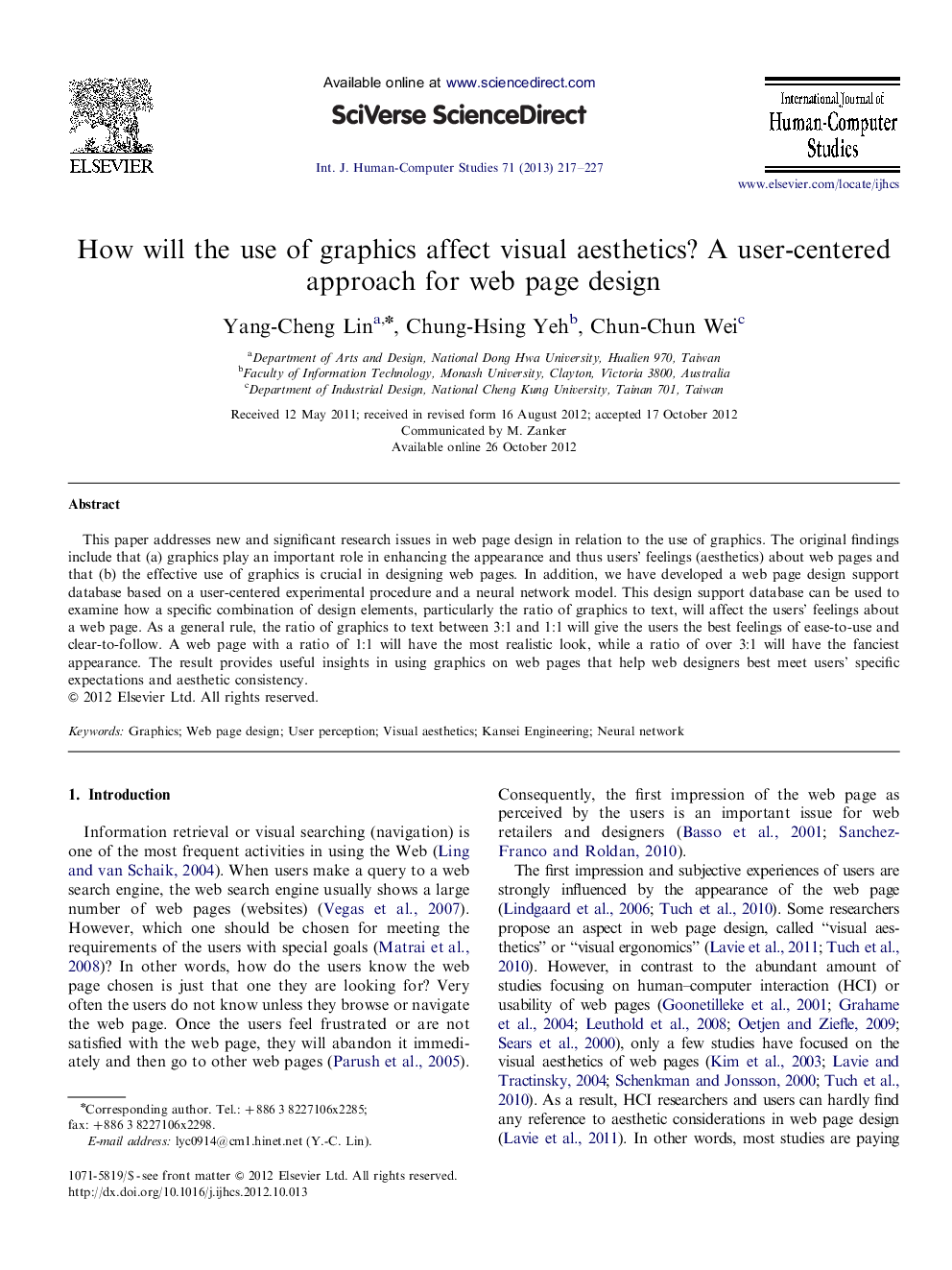| کد مقاله | کد نشریه | سال انتشار | مقاله انگلیسی | نسخه تمام متن |
|---|---|---|---|---|
| 400892 | 1438999 | 2013 | 11 صفحه PDF | دانلود رایگان |

This paper addresses new and significant research issues in web page design in relation to the use of graphics. The original findings include that (a) graphics play an important role in enhancing the appearance and thus users' feelings (aesthetics) about web pages and that (b) the effective use of graphics is crucial in designing web pages. In addition, we have developed a web page design support database based on a user-centered experimental procedure and a neural network model. This design support database can be used to examine how a specific combination of design elements, particularly the ratio of graphics to text, will affect the users' feelings about a web page. As a general rule, the ratio of graphics to text between 3:1 and 1:1 will give the users the best feelings of ease-to-use and clear-to-follow. A web page with a ratio of 1:1 will have the most realistic look, while a ratio of over 3:1 will have the fanciest appearance. The result provides useful insights in using graphics on web pages that help web designers best meet users' specific expectations and aesthetic consistency.
► The first impression of users is strongly influenced by the web page appearance.
► Graphics play an important role in enhancing the visual aesthetics of web pages.
► Most influential elements are “Ratio of Graphics to Text” and “Hyperlink Style”.
► The ratio between 3:1 and 1:1 shows the feelings of ease-to-use and clear-to-follow.
► The result helps designers best meet users' specific expectations and web aesthetics.
Journal: International Journal of Human-Computer Studies - Volume 71, Issue 3, March 2013, Pages 217–227